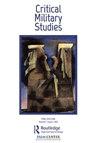Battlefield monuments and popular historicism: a hermeneutic study of the aesthetic encounter with ‘Waterloo’
Q1 Arts and Humanities
引用次数: 1
Abstract
ABSTRACT Focusing on the case of the tourist visiting battlefield monuments at Waterloo, this article explores how war is historicized in the public imagination through the monumentalization of objects. The argument is two-fold. Firstly, drawing on Gadamer’s hermeneutics, it is argued that ‘tradition’ is constituted in the aesthetic encounter between tourist and monument (as subject and object); such encounters are therefore understood as the genesis of historical meaning. Secondly, through a critique of Gadamer’s notion of ontological structures of meaning, it is argued that the tourist is phenomenologically implicated in the constitution of historical meaning, emphasizing the agency of the historical observer more than Gadamer allows for: Objects become monuments through the monumentalizing gaze of the tourist. To empirically illustrate these processes, the author ethnographically explores the experience of battlefield tourist and presents his own dialogue with war-tradition at Waterloo. As such, this study contributes a theoretical account of how war is historicized at the phenomenological level, which has broader sociological implications for understanding how war discourses originate and are sustained in the public imagination.战场纪念碑和大众历史主义:对“滑铁卢”美学遭遇的解释学研究
本文以参观滑铁卢战场纪念碑的游客为例,探讨了战争是如何在公众的想象中通过文物的纪念性而被历史化的。这个论点有两个方面。首先,借鉴伽达默尔的解释学,认为“传统”是在游客和纪念碑(作为主体和客体)的审美相遇中构成的;因此,这样的相遇被理解为历史意义的起源。其次,通过对伽达默尔意义本体论结构概念的批判,作者认为游客在现象学上牵涉到历史意义的构成,强调了历史观察者的代理作用,而不是伽达默尔所允许的:通过游客的纪念性凝视,物体成为纪念碑。为了从经验上说明这些过程,作者从民族志上探讨了战场游客的经历,并提出了他自己与滑铁卢战争传统的对话。因此,本研究对战争如何在现象学层面上被历史化做出了理论解释,这对于理解战争话语如何在公众想象中起源和维持具有更广泛的社会学意义。
本文章由计算机程序翻译,如有差异,请以英文原文为准。
求助全文
约1分钟内获得全文
求助全文
来源期刊

Critical Military Studies
Arts and Humanities-History
CiteScore
1.90
自引率
0.00%
发文量
20
期刊介绍:
Critical Military Studies provides a rigorous, innovative platform for interdisciplinary debate on the operation of military power. It encourages the interrogation and destabilization of often taken-for-granted categories related to the military, militarism and militarization. It especially welcomes original thinking on contradictions and tensions central to the ways in which military institutions and military power work, how such tensions are reproduced within different societies and geopolitical arenas, and within and beyond academic discourse. Contributions on experiences of militarization among groups and individuals, and in hitherto underexplored, perhaps even seemingly ‘non-military’ settings are also encouraged. All submitted manuscripts are subject to initial appraisal by the Editor, and, if found suitable for further consideration, to double-blind peer review by independent, anonymous expert referees. The Journal also includes a non-peer reviewed section, Encounters, showcasing multidisciplinary forms of critique such as film and photography, and engaging with policy debates and activism.
 求助内容:
求助内容: 应助结果提醒方式:
应助结果提醒方式:


